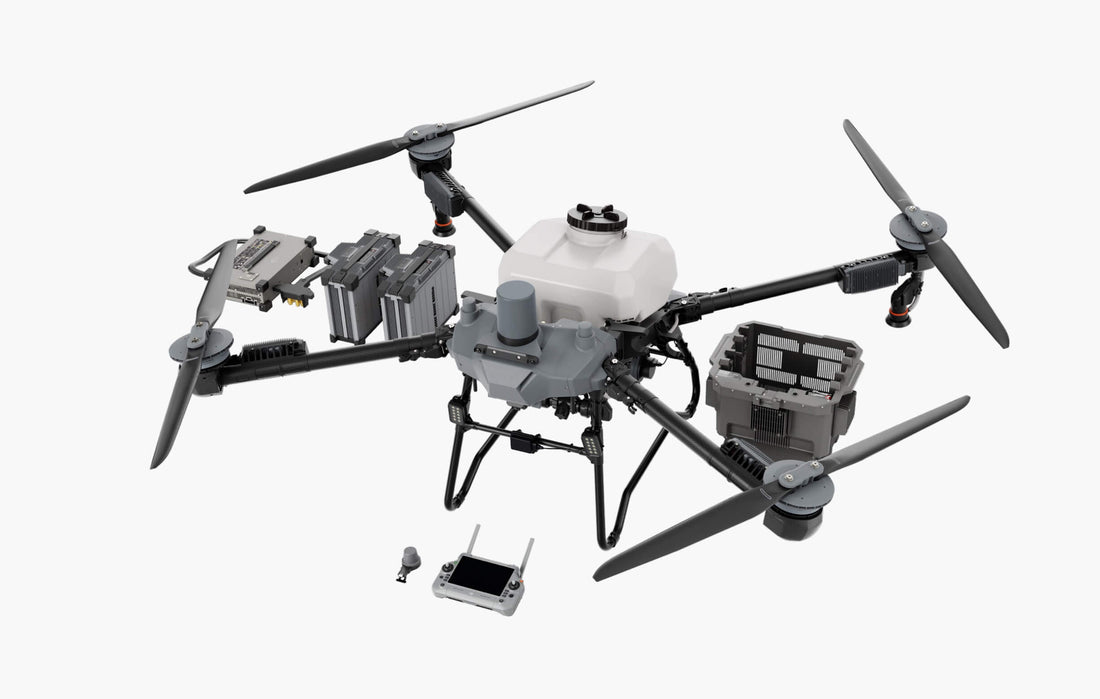Modern agriculture is undergoing a radical transformation, thanks to technological advancements which are increasing the efficiency and effectiveness of farming. Drones for agriculture are a game changer, particularly in the area of crop management. The drones, specially designed for agricultural use, give farmers a way to reduce expenses for labor, increase precision when spraying, and ultimately boost yields.

The Rise of Agriculture Drones
Sprayer drones or agriculture drones have become indispensable tools for the farming industry. They have the latest technology that enable them to complete many tasks including spraying pesticides and herbicides on large areas of crops. Agriculture drones offer unparalleled precision. They spray precisely the amount of product where it’s required. This means less pollution and leaves a small impact on the environment.
The use of agriculture drones can be particularly advantageous in large-scale farming operations which require manual spraying of crops, and can be lengthy and labor-intensive. The drones can cover large areas quickly, saving farmers money and time. They also enable farmers to concentrate on other essential aspects of managing farms.
The 20L Agriculture Drone: Efficiency and Precision
The 20L Agriculture Drone comes with a tank size of 20 liters, which makes it a highly efficient and flexible sprayer drone. It is perfect for farms with an space ranging from 200-1,000 acres. This drone is equipped with a tank with 20 liters of capacity that makes it ideal for medium-sized farms who need to spray regularly but do not require the power of a larger drone.
The 20L Agriculture Drone’s light design is among the most notable characteristics. It enhances maneuverability and reduces the stress on the drone’s power system. The arms foldable of the drone enable quick deployment and easy transport. This feature can be very beneficial to farmers who need to quickly switch between areas within their farm.
The 20L Agriculture Drone also boasts a rapid-release medicine box and battery system, which streamlines the recharge and refilling. The quick-release medicine container and battery system will ensure that there is no interruptions, which allow farmers to maintain a consistent schedule for spraying. The drone is also equipped with FPV and Radar cameras, which offer real-time feedback, which can improve the precision and accuracy of spraying. These cameras offer enhanced monitoring and control capabilities, which are especially beneficial to entry-level users.
The 30L Drone is designed for large Farms: Power and Capacity
For larger farming operations, the 30L Agriculture Drone offers an ideal solution. The 30 liter tank on the drone that sprays will allow it to cover a greater area and to carry more payload as compared to the 20-liter model. This capacity increase means that less refills are needed, which allows the drone to cover more area in less time.
The 30L Agriculture Drone has a lightweight and robust frame which reduces the dead weight, while remaining strong and resistance to impact. The drone was designed to stand up to the demands of large-scale farming operations, where durability is a must. Similar to the 20L version that is available, the 30L Agriculture Drone has a folding arms as well as a pluggable tank for fuel. It is portable and user-friendly.
The capability to operate in multiple modes including fully autonomous flight is one of the most notable characteristics of the 30L Drone. The drone can be pre-programmed for flights, ensuring precise and consistent spraying across large fields. Farmers who manage multiple tasks will find the autonomous mode especially useful as they can let their drone perform their tasks with no supervision.
The Impact of Sprayer Drones on Modern Farming
The industry of farming has been greatly impacted by the introduction of agriculture drones. Particularly the 20L and 30L models. These drones lower the cost of operation through the automation of spraying. The precision of these drones has also has led to better crops management and healthier plants which led to higher yields.
Alongside their economic benefits, agricultural drones also contribute to environmental sustainability. Sprayer drones can reduce the amount of pesticides, fertilizers and other chemicals that are used worldwide.
Conclusion
Drones for agriculture, like the sprayer 20L and 30L drones, will be the future of farming. These drones assist farmers to meet the challenges of modern farming with their innovative features, efficiency, and versatility. A drone designed for agriculture can be a great investment, regardless of whether you’re running a small-scale farm or a larger operation. It will increase your efficiency and help you save money. Agriculture drones are set to play a major role in growing sustainable agriculture as technology improves.